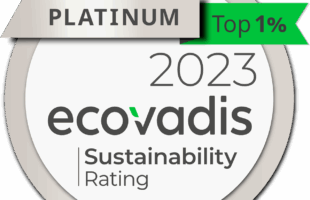
Courtesy of Dan Cristian Pădureț/Pexels
Whether it is to adopt a vegetarian diet, out of concern for the environment, to combat intensive farming, or out of religious conviction, an increasing number of consumers are looking for products formulated with plant-based ingredients to substitute those of animal origin. This is one of the challenges facing the food industry, in particular manufacturers of confectionery, jelly sweets and marshmallows. Syndeo® Gelling, the texturing agent developed by Alland & Robert, provides an innovative and multifunctional solution.
Aware of changing consumer trends, the food industry has been studying alternatives to gelatin for several years in the hydrocolloid sector. However, few existing alternatives to gelatin achieve the expected standards in terms of texture and elasticity.
Developed by Alland & Robert, the Syndeo® Gelling texturising agent addresses these issues and enables the reformulation of several types of traditional gelatin-based products, including the “famous” jelly confectionery.
What are its benefits?
Its composition is based on 100 percent plant-based hydrocolloids and gum arabic, whose combined properties provide a compromise between gelatin and pectin. This means that while gelatin offers high elasticity and reduced stickiness, pectin helps achieve firmer, stickier textures with little or even no elasticity. Syndeo® Gelling offers low hardness and higher elasticity than pectin without creating any stickiness.
Syndeo® Gelling, therefore, offers an alternative for vegan sweet recipes and health supplements such as gummies that look like sweets. Indeed, this market is rapidly developing and is not immune to the quest for healthier products.
Syndeo® Gelling is composed of gum arabic mixed with natural hydrocolloids of plant origin. It can therefore be used in the formulation of vegetarian or vegan food products,” says Dr Isabelle Jaouen, R&D director at Alland & Robert.
A booming market
Sweets are comforting and remain popular with consumers. By 2027, the confectionery market is expected to grow by 3.42 percent per year. The consumption of jelly sweets, lozenges and gum is even expected to grow by 4.7 percent. Another notable development is that since 2018, vegan or environmental labelling has made its mark on packaging in the sector.
Syndeo® Gelling: a comprehensive response to the various challenges facing manufacturers
The properties of Syndeo® Gelling provide an innovative solution for confectionery manufacturers looking for gelatin substitutes. Being of plant origin, it improves the image of confectionery and has a lower environmental footprint than products of animal origin.
The use of this product does not alter the sensory characteristics of jelly sweets as it offers to thicken, stabilising, bulking and binding qualities to recipes for confectionery, jelly sweets and marshmallows.
It preserves the tasting experience and even feels pleasant in the mouth. It is odourless, colourless and neutral-tasting. Its versatile formulation is suitable for various confectionery applications and even for other textured products with gelatin, such as mousses or creams.
The Alland & Robert R&D team has already expanded its research into texturing, and the development of mousses; dairy specialities and cream desserts (both plant- and non-plant-based) and food supplements will be among the next areas of development.
Hardness, stickiness, cohesiveness and resilience: key characteristics used to formulate Syndeo® Gelling
To develop the Syndeo® Gelling formulation, Alland & Robert’s R&D team used multiple texture profile analyses during its experiments. This analysis technique characterises the texture aspects of a product. It also simulates the behaviour of products during chewing.
n this connection, Alland & Robert has defined and evaluated four key attributes for characterising texture and consumer sensory perception in confectionery: hardness, stickiness, cohesiveness and resilience. These are essential to design a gelling agent that meets the expectations of the general public and the specific requirements of formulators.
A recipe for jelly sweets tested and approved by Alland & Robert
Ingredients (as % of weight)
- Water: 38,3
- Sucrose: 19,2
- Glucose syrup 40 DE: 11,5
- Glucose syrup 60 DE: 26,9
- Syndeo® Gelling: 3,1
- Citric acid (E330): 0,6
- Sodium citrate (E331): 0,4
- Colouring agents/flavourings
Instructions
- Mix the water, glucose syrups and sodium citrate and bring the solution to 80°C. Keep them at this temperature for 2 minutes.
- Add the sucrose and Syndeo® Gelling while mixing, and blend for 8 minutes at 120 °C.
- Add and mix in the citric acid just before the starch deposition phase.
- Pour into the starch moulds and dry the sweets for 72 to 96 hours at 32 °C.
Syndeo® Gelling benefits from the positive effects of gum Arabic on health
In the United States, the Food & Drug Administration (FDA) granted gum arabic dietary fibre status in December 2021.
It can be included as a fibre in nutritional labelling in the United States. This endorsement confirms the beneficial physiological effects of this fibre observed on human health. The studies forming the basis of the FDA’s decision showed, among other things, a reduction in blood glucose and insulin levels in people who consumed gum arabic as part of a high-carbohydrate diet.
In Europe, gum has already been considered a fibre for many years, enabling claims such as “source of fibre” or “enriched with fibre” to be made depending on the dosage used. Comprising gum arabic mixed with natural hydrocolloids of plant origin, Syndeo® Gelling can therefore potentially help improve the nutritional profile of confectionery recipes.
Gum Arabic also contributes to gut health
The links between gastrointestinal health and digestion, weight management, immunity, chronic diseases, sleep problems, and skin health have been extensively documented in recent years.
This is why, in 2022, Alland & Robert conducted a study in cooperation with Merieux NutriSciences, an institute specialising in clinical studies and consumer needs analysis to develop innovative products.
The study involved 240 volunteers with bowel problems such as stomach ache, bloating and slow or fast transit. Each of them ingested one dose of gum arabic powder daily at breakfast time.
After 60 days, 88 percent of the consumers observed a reduction in their intestinal pain, and over 80 percent perceived an improvement in their intestinal discomfort. Overall, 78% of consumers reported that daily consumption of gum arabic had a beneficial effect on their intestinal well-being.
Our study found that gum Arabic improves overall digestive well-being, making it an effective ingredient in the formulation of gut-friendly foods and drinks,” shares Jaouen.
A brief explanation of the product
Alland & Robert has developed Syndeo® Gelling, a texture agent formulated on the basis of gum arabic. One-hundred percent natural and of plant origin, it is particularly well suited to the needs of confectionery and jelly sweet manufacturers looking for alternatives to gelatin of animal origin.
Syndeo® Gelling provides texturising, thickening, stabilising and binding qualities to recipes, offering a solution to substitute gelatin. This is just the right response to market developments and consumer expectations.
Gum Arabic: an ingredient like no other
Gum Arabic is a completely natural ingredient which is still little known to the general public. It can be found as an additive under various names: E414, gum arabic, acacia gum or acacia fibre. But an additive is not necessarily harmful!
As it is 100 percent natural, harvested by hand and processed without chemicals, gum arabic is a healthy product. It is recognised as a source of fibre and has a prebiotic effect. All international regulatory authorities confirm that it is safe, from the European Food Safety Authority (EFSA) to the Food and Drug Administration (FDA) and the Joint FAO/ WHO Expert Committee on Food Additives (JECFA). The consumption of gum arabic is, therefore, not a health risk however it is used.









